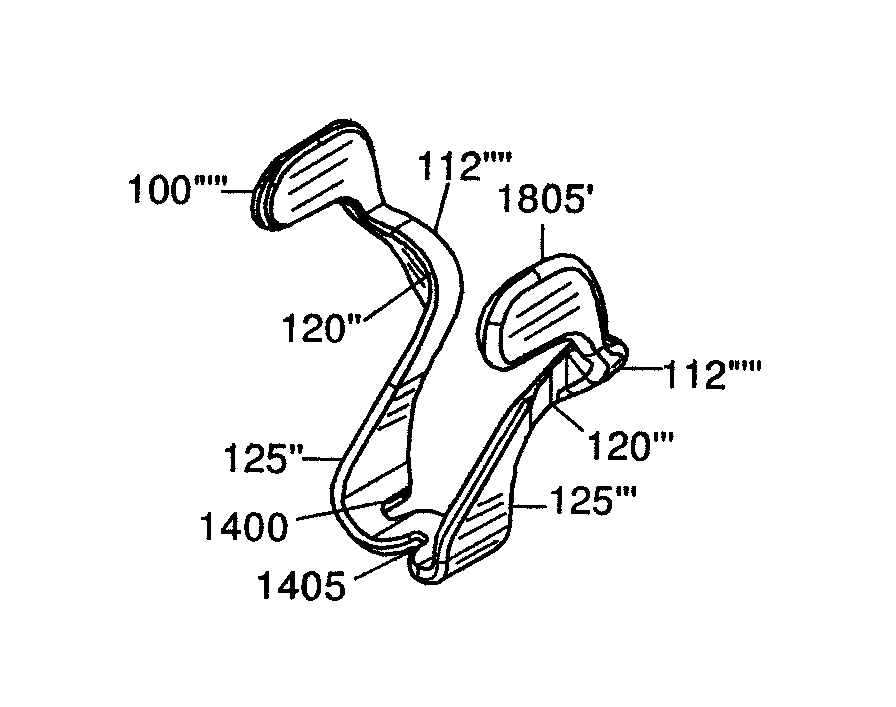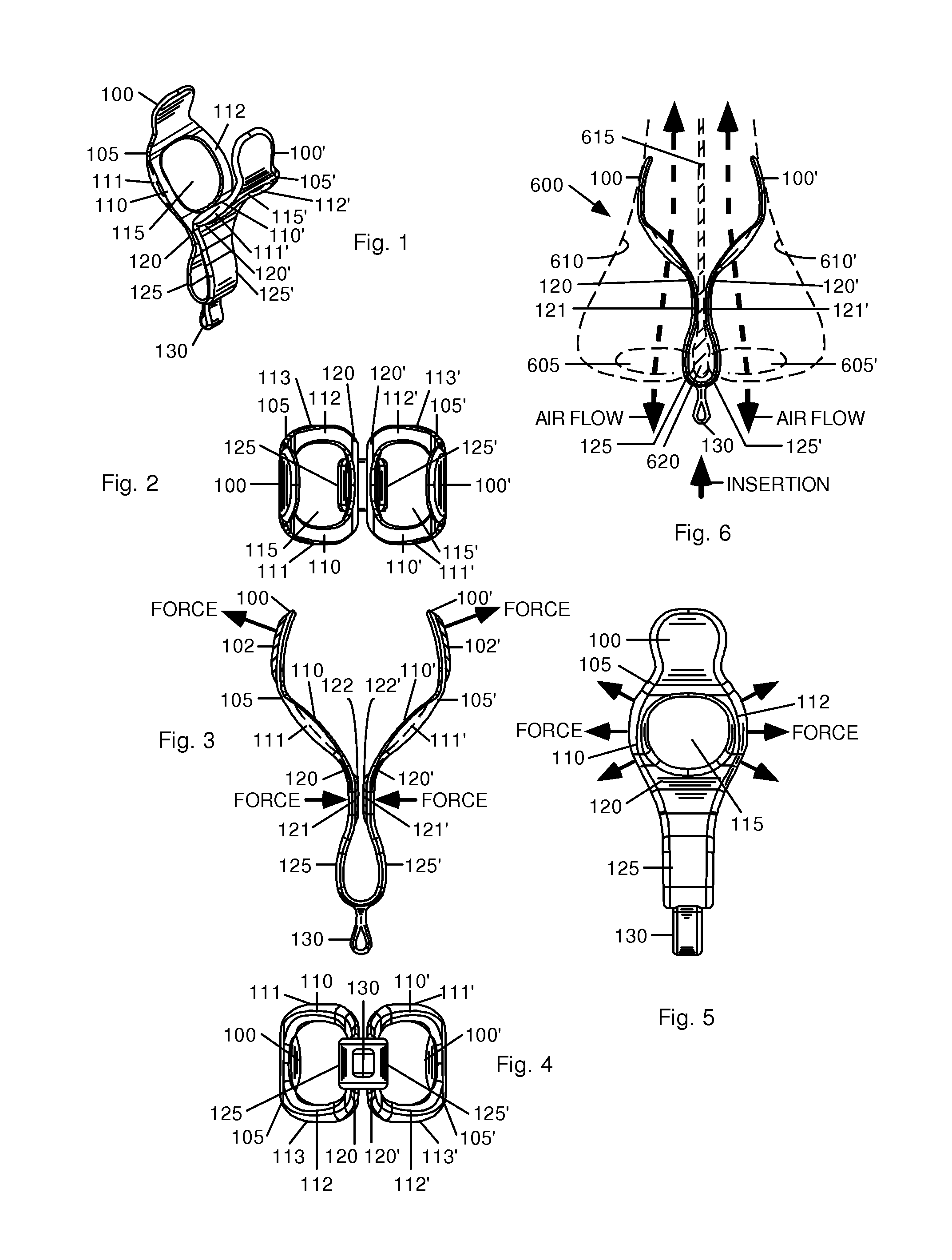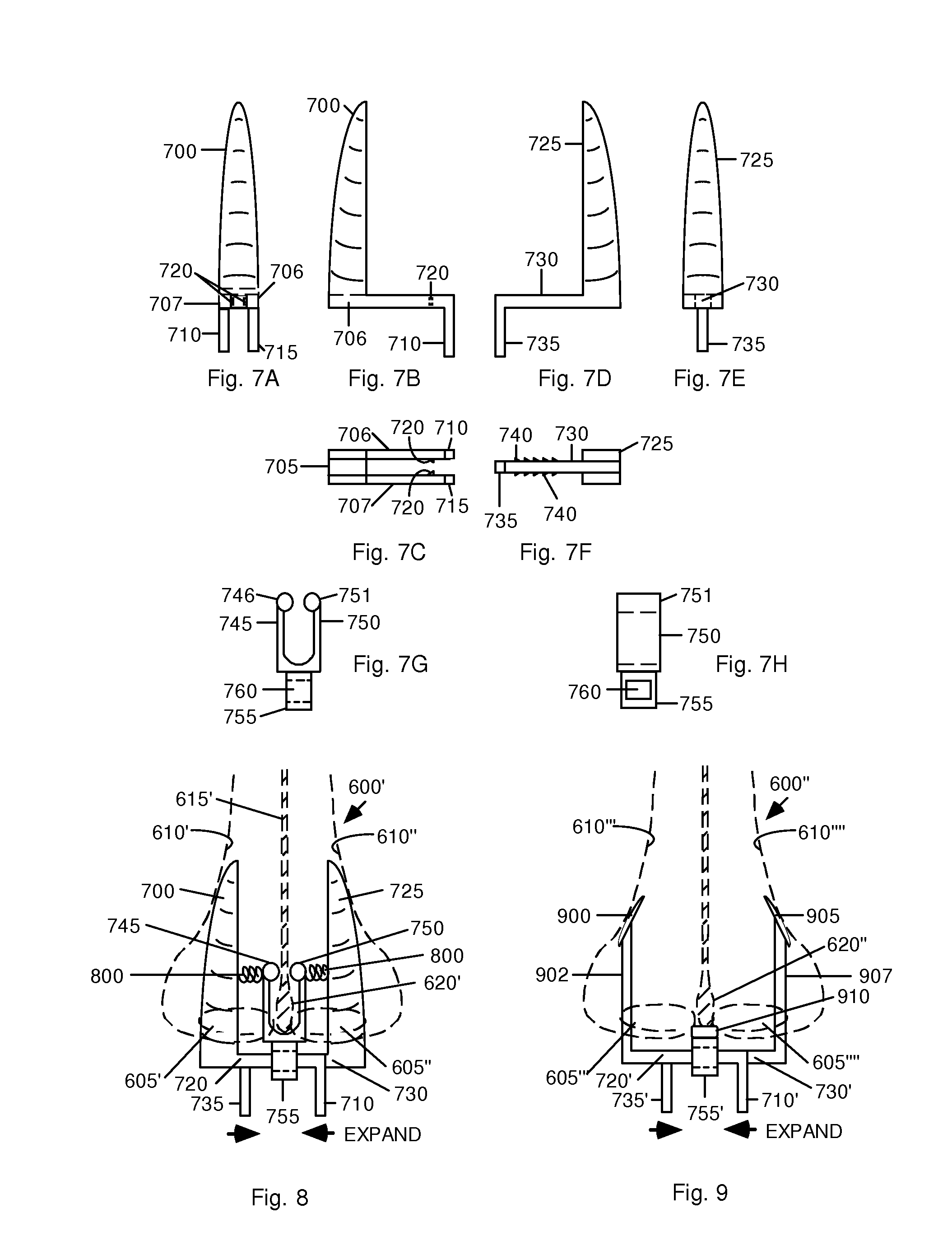Nasal dilator comprising joined legs with end pads and air passages
a dilator and end pad technology, applied in the field of intranasal instruments, can solve the problems of affecting the normal breathing of the skin, requiring installation, and being neither inexpensive nor disposable, and unable to meet the needs of patients,
- Summary
- Abstract
- Description
- Claims
- Application Information
AI Technical Summary
Benefits of technology
Problems solved by technology
Method used
Image
Examples
first embodiment
Operation—FIG. 6
[0064]FIG. 6 shows a frontal view of the dilator fully inserted and in use in a wearer's nose. The nasal structures affected by insertion of the dilator include the nostrils 605 and 605′, the outer nostril walls 610 and 610′, the septum 615, and the columella (the fleshy, lower widened column at the base of the nasal septum, i.e., the portion of the septum that one sees when looking at a person's nose from the outside) 620. To use the dilator, the wearer grips handle 130, or the bight at the bottom of the dilator if no handle 130 is used, inserts tabs 100 and 100′ into nostrils 605 and 605′, and gently urges the dilator inward until the inside of the bight—the junction of vertical sections 125 and 125′—rests against columella 620. At this point, pads 100 and 100′ springably press against outer nasal walls 610 and 610′, urging them outward, away from septum 615, thereby enlarging the airway path of the nostril and easing the wearer's breathing as air freely flows thro...
first alternative embodiment
Description—FIG. 3—Cushions Added to Surfaces in Contact with Nasal Tissues
[0068]FIG. 3 is a front elevation view of the dilator. In order to further protect the nasal linings, optional cushions 102 and 102′ can be added to pads 100 and 100′. Similarly, optional cushions 122 and 122′ can be added inside pads 121 and 121′ to protect septum 615. In addition, cushions can be applied to surfaces 111, 111′, 113, and 113′. These cushions can be made of silicone rubber, caoutchouc (rubber), soft plastic, plastic foam, or foam rubber or any other suitable material. The cushions can optionally contain medications (not shown) that will diffuse into the wearer's nasal walls 610 and 610′ by virtue of contact between the two.
Second Alternative Embodiment
Description—FIGS. 7A-7F and 8—Dilating Arms Slidably Mounted with Respect to Each Other
[0069]FIGS. 7A through 7H show another or second embodiment of a dilator comprising separate left and right portions which each have a center portion that exte...
second alternative embodiment
Operation—FIG. 8
[0073]FIG. 8 shows frontal view of a wearer's nose 600′ with nostrils 605′ and 605″, nasal walls 610′ and 610″, septum 615′, and columella 620′, and a dilator in place. Rails 720 and 730 have been inserted through opening 760 in portion 755.
[0074]The dilator of this embodiment is initially supplied with rail 730 inserted into the gap between rails 706 and 707 with vertical members 700 and 725 at rest as close as possible to each other. In this position, handles 710 and 735 are at their maximum separation.
[0075]To use the dilator, the wearer inserts members 700 and 725 into nostrils 605′ and 605″, respectively, until the bight portion of the dilator rests against columella 620′. Balls 746 and 751 at the ends of arms 745 and 750 may touch septum 615′ and will surround columella 620, ensuring that the dilator will not be unintentionally ejected from nose 600′. Then the user gently squeezes handles 710 and 735 together, forcing members 700 and 725 apart until the desired...
PUM
 Login to View More
Login to View More Abstract
Description
Claims
Application Information
 Login to View More
Login to View More - R&D
- Intellectual Property
- Life Sciences
- Materials
- Tech Scout
- Unparalleled Data Quality
- Higher Quality Content
- 60% Fewer Hallucinations
Browse by: Latest US Patents, China's latest patents, Technical Efficacy Thesaurus, Application Domain, Technology Topic, Popular Technical Reports.
© 2025 PatSnap. All rights reserved.Legal|Privacy policy|Modern Slavery Act Transparency Statement|Sitemap|About US| Contact US: help@patsnap.com



